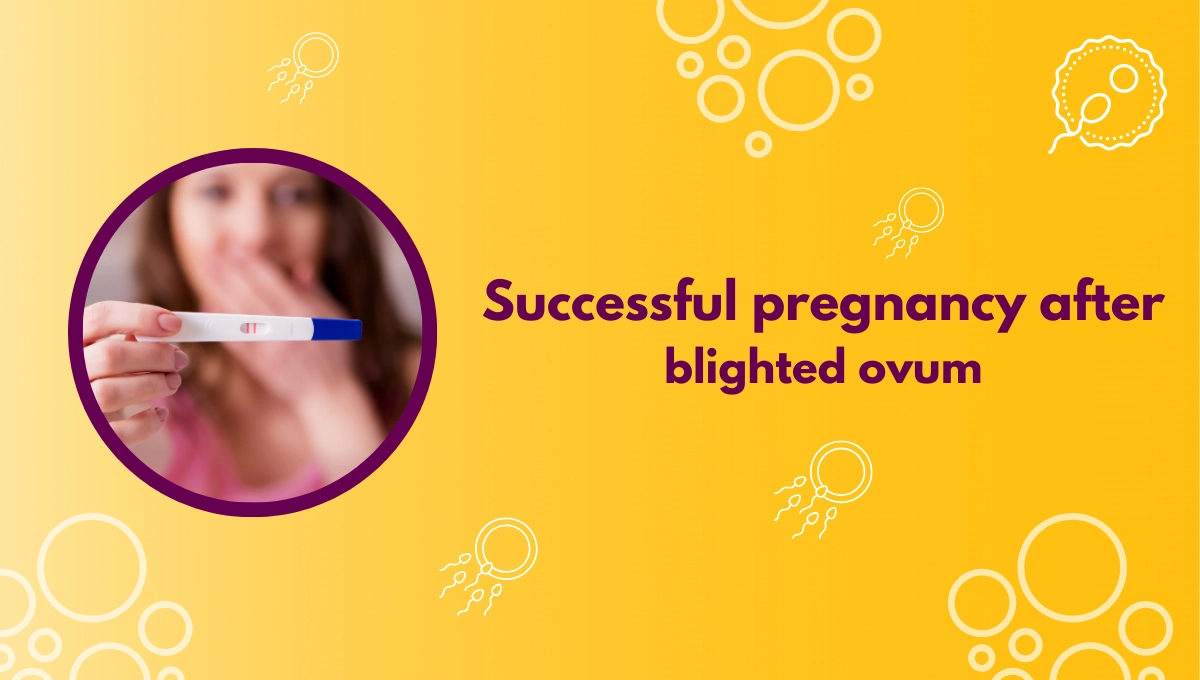Miscarriages are always depressing, no matter whether you are conscious of it or not. There are times when you might not even know you had a miscarriage and go on about your day. A blighted ovum is one such type of miscarriage.
A blighted ovum, or an “anembryonic pregnancy,” is a type of miscarriage that happens during the early stages of pregnancy, usually within 7–12 weeks of pregnancy.
It is entirely normal for you to fear the chances of future pregnancies after a miscarriage. In this article, we will discuss your chances of pregnancy after a blighted ovum. We will also look into its complications and how you can recover from the condition.
Chances Of A Successful Pregnancy After A Blighted Ovum
Having a blighted ovum usually does not impact your chances of having a successful pregnancy in the future. You can have a normal pregnancy and deliver a healthy baby just like any other woman.
A blighted ovum happens when the fertilized egg that has implanted into the uterine lining does not develop into an embryo. This is mainly caused due to genetic or chromosomal abnormalities in the embryo.
However, don’t rush into the next pregnancy immediately. You and your body need time to recover from the miscarriage. Most doctors recommend women wait for at least two or three menstrual cycles before trying for pregnancy again.
You can also consult your doctor to determine when it would be safe to conceive again. Most of the time, the issue will be with the sperm and egg quality. You can undergo tests like
Semen analysis (to check the quality of your partner’s sperm)
FSH (follicle stimulating hormone) or AMH (antimullerian hormone) tests to determine the quality of your eggs.
You can undergo these tests, rectify any existing issues, and then try for pregnancy. This can increase your chances of a successful pregnancy.
If you are undergoing fertility treatments like IVF, your doctor will also perform tests like preimplantation genetic screening (PGS). This test will analyze the quality of embryos and help choose the best ones for embryo transfer, further increasing the chances of a successful pregnancy.
What Are The Complications Of A Blighted Ovum?
Though rare, there are certain complications associated with having a blighted ovum. These complications are mostly treatable and can be rectified with some medical assistance.
Incomplete Miscarriage
An incomplete miscarriage is when the entirety of the endometrial tissue is not expelled from the uterus, and some remain inside. This can lead to complications like infections, heavier bleeding, abdominal pain, fever, foul-smelling vaginal discharge, etc.
You can undergo a D&C (Dilation & Curettage) procedure to remove the excess tissue and other remains from the uterus.
Asherman’s Syndrome
Sometimes, a miscarriage can cause scarring in your uterine lining. This is called Asherman’s syndrome and can cause complications like irregular or scanty periods and increase your chances of future miscarriages.
Emotional Distress
Having a miscarriage, even if it is in the early stages, can be depressing and cause immense pain and grief. This can impact your or your family’s emotional well-being.
How Long Does It Take To Recover From A Blighted Ovum?
The time taken to recover from a blighted ovum can differ from person to person, depending on their health condition. This is a step-by-step description of what will happen in your body after a miscarriage from a blighted ovum.
- After you discover a blighted ovum through an ultrasound, your doctor will perform a D&C (Dilation & Curettage) to remove the tissues from your uterine lining.
- You will then have bleeding for about 1–2 weeks. The bleeding will be heavy in the beginning and reduced gradually. You might also have abdominal cramps.
- Bleeding can increase if you do strenuous physical activities. So, go easy on yourself for a few days after the miscarriage.
- Your hormones will be imbalance during this stage. So, your next menstrual cycle might take 4–6 weeks to arrive.
- Rest during this time. You can resume your normal daily activities when your bleeding is low and you feel comfortable.
Emotional recovery from a miscarriage can be harder to achieve than physical recovery. So, take your time, relax, and seek emotional support from your friends and family. Believe that your next pregnancy will definitely be a success, and overcome this ordeal with confidence.
Conclusion
A miscarriage due to a blighted ovum happens during the early stages of pregnancy. Most women won’t even realize they are pregnant when they have a miscarriage.
Still, a miscarriage is a miscarriage, and it can be physically and emotionally painful. If you have been having recurrent miscarriages, it is best to visit a renowned fertility hospital and undergo the necessary treatment procedures.
The expert fertility specialists there will look into your condition, identify the root cause of the miscarriages, and give you the right treatment to resolve the issue and help you get pregnant successfully.
There are very low chances of having a blighted ovum again. It is not a recurrent issue. However, if you experience a blighted ovum the second time, you might have to consult your fertility doctor and identify the cause of the issue.
Most fertility doctors recommend you wait for at least two or three menstrual cycles (two or three months) after a blighted ovum miscarriage before trying to get pregnant again.
A blighted ovum does not affect your chances of pregnancy in the future. You can try for a natural pregnancy after a few months. If the issue is recurrent, you can visit a fertility doctor and undergo fertility treatments to get pregnant.







